on partner site
Best business lines of credit in December 2025
Updated December 4, 2025
on BusinessLoans.com
on BusinessLoans.com
on BusinessLoans.com
on BusinessLoans.com
on Bankrate
on Bankrate
on Bankrate
on Bankrate
How Bankrate works

How Bankrate works
Compare lenders
Our team researched the best business loan options available so you can compare business lines of credit.
Get personalized rates:
If you see an option that's compelling to you, click the 'See personalized rates' button to get started.
Get matched and receive funding
Choose a loan from a Bankrate partner and receive your funds if you qualify.
A closer look at Bankrate's top business lines of credit
Best for early payoff discount: National Funding
With fair loan terms and fast funding, National Funding is one of the most competitive lenders on the market. It offers discounts for borrowers who are able to pay off their loans early. This is a welcome contrast to lenders that penalize early payoffs.
Pros and cons
- Access to high loan amounts
- Offers early payoff discounts
- Funding specialists available to help
- Limited information on website
- $250,000 minimum annual revenue requirement
Bankrate 2025 Award Winner Best business line of credit: Fundible
Fundible is Bankrate's 2025 winner for best business line of credit because of its favorable lending terms, fast funding and loan amounts ranging anywhere from $10,000 to $500,000. That, combined with its low time-in-business and minimum revenue requirements, make it a compelling choice for any prospective borrower.
Pros and cons
- Low personal credit score requirements
- Variety of loan options
- Fast funding
- Some loans have stricter requirements
- Uses partner network
- You’ll need to apply to know what you qualify for
Best for established businesses: Bluevine
If your business is well along in its journey, then Bluevine might be an ideal fit for you. If you have the monthly revenue to meet its minimum requirements, Bluevine offers fair interest rates for qualified applicants in addition to its quick funding speed.
Pros and cons
- Low minimum credit score
- High loan maximums
- Bank and borrow with the same company
- 12-month plan requires $80,000 monthly revenue
- Limited term length options
- Max interest rate not disclosed
Best for secured line of credit: American Express Business Blueprint
American Express Business Blueprint offers a unique monthly fee structure that allows borrowers to save money if they can pay off their line of credit early.
Pros and cons
- Online application
- Flexible access to funds
- Multiple term options
- High fees on longer terms
- Personal guarantee required
- Minimum draw amounts
Best for fast funding: Fundbox
Fundbox is another quick lender, and in some cases, it may be able to approve your application within minutes of applying. Funding is equally fast, and you may be able to access your line of credit as soon as the next business day.
Pros and cons
- Fast online application
- Next-day funding
- Low minimum credit score
- Short repayment terms
- Fees make it hard to compare rates
- Weekly payments
Bankrate 2025 Award Winner Best lender for short-term business loans: Backd
Backd is our 2025 winner for short-term business loans because of its flexibility and features offered to borrowers. It also offers high credit limits to borrowers, with up to $750,000 available in funding.
Pros and cons
- High unsecured loan amounts
- Relaxed eligibility requirements
- No personal guarantee required
- Weekly repayments required
- Short repayment periods of 6 or 12 months
- Charges a high 3% origination fee
Bankrate 2025 Award Winner Best lender for startups: OnDeck
Due to its flexible range of short-term lines of credit, OnDeck is our 2025 award winning lender for startups. With loan terms as short as 12 months and amounts as high as $100,000, it can be a good option for companies just starting on their business journey.
Pros and cons
- Fast, same-day funding
- Relaxed eligibility
- Reports to credit bureaus
- Not available in all 50 states
- High interest rates
Best for low interest: Bank of America
With low starting interest rates for its unsecured lines of credit, Bank of America offers highly competitive terms. As a traditional financial institution, it is also able to offer valuable face-to-face guidance at any of its branch locations.
Pros and cons
- No loan maximum
- Renewable loan terms
- Multiple options for differing needs
- Stringent eligibility requirements
- Branches not in every state
Bankrate 2025 Award Winner Best lender for good-to-excellent credit: Wells Fargo Business
Wells Fargo competitive interest rates and a wide range of loan amounts for its secured and unsecured lines of credit. This is part of the reason why the bank won our 2025 award for best small business lender for those with good-to-excellent credit.
Pros and cons
- Offers 3 business lines of credit
- Low starting rates
- Earn rewards on eligible purchases
- Requires a 680 credit score
- $100,000 limit for online applications
How Bankrate chooses our best business line of credit lenders
Bankrate's trusted small business loan industry expertise
57
years in business
30
lenders reviewed
22
loan features weighed
770
data points collected
How to get a business line of credit through Bankrate
If you’re ready to apply for a business line of credit, Bankrate makes it easy for you. Our in-depth guide can help you find the right line of credit, get your application in order, boost your odds of approval — all while you compare lenders for the best possible deal.
1. Determine if a line of credit is right for your business
A line of credit can be a useful lending product under the right circumstances, which may include:
- Flexible spending needs.
- Ability to manage a short and aggressive repayment period.
- Continual, revolving or unpredictable spending needs.
- Smaller funding needs.
A business line of credit is an attractive financing option for companies that value flexibility, given uncertain and/or erratic liquidity needs. Unlike a traditional loan, which entails borrowing an interest-bearing sum upfront, a line of credit allows you to borrow only what you need, when you need it (up to a predetermined credit limit). This type of revolving credit facility enables financial agility, while minimizing interest expense.Thomas Brock, CFA, CPA
2. Calculate how much debt your business can handle
How much debt you take on can determine whether your business succeeds or fails, which is why it’s important to budget out your debt balance and monthly payments ahead of time.
As a rule of thumb, you should aim for no more than a 36% debt-to-revenue ratio. This means that if your business makes $100,000 annually, you should aim for no more than a $36,000 credit and interest balance for the year. On a monthly basis, this means your monthly payment should be no more than $3,000 with interest and fees.
Since your line of credit balance can change, it’s a good idea to calculate your monthly payment ahead of each draw you take, and ensure you either have the revenue or the cash reserves to cover your line of credit payment.
Bankrate can help you find the right lender by allowing you to compare rates, fees, limits and requirements all in one place. Use our loan calculator to get started and get matched with the best lender for your needs.
3. Find the right lender for a business line of credit
Selecting the right lender for your business line of credit can set you up for success, especially if you borrow from them in the future and establish a long-term relationship.
When considering a lender, you’ll want to think about the following factors:
- Line of credit rates and fees. Some lenders will offer lower interest rates or limited fees.
- Line of credit terms. How much you can borrow, whether the line of credit is revolving and your draw limit will vary depending on the lender.
- Product offerings. Lenders can have a wide variety of loan products, such as traditional loans, business credit cards or real estate loans.
- Requirements. Different lenders can have stricter or more relaxed borrowing requirements.
- Speed of approval. Some lenders will offer approval in less than 24 hours, and funding may be available as soon as the next business day.
- Customer service. Some lenders can offer features such as personalized loan matching, 24/7 customer service or access to a mobile app.
While lenders will differ in their offerings and approaches, different types of lenders can offer different pros and cons.
4. Make sure your business meets requirements
Ensuring you can qualify for a business line of credit can help you save time and a possible hard check on your credit score when you apply. While not all lenders will have the same requirements, as a rule of thumb, you’ll want to have:
- A personal credit score of 600 or better.
- At least six months in business.
- Minimum annual business revenue of $50,000.
It's also a good idea to gather a list of documents you'll need to complete your application — such as business tax returns, registration paperwork and your business plan.

What documents are required for a business line of credit?
To make the loan process easier, be prepared with the documents you'll need.
Read more5. Prequalify through Bankrate
When shopping for loans, consider prequalifying with us. Bankrate offers multiple benefits if you decide to prequalify on our site, including:
- Instant prequalification based on your credit profile.
- Compare multiple lenders at once instead of one lender at a time.
- No hard checks.
- Get expert insights based on unbiased reviews and analyses.
- Access loan information and applications in one place.
- Build a profile you can access later in the process.
Business lines of credit vs. business loans
The key difference between a business loan and a business line of credit is flexibility in funding. While a business loan offers financing in a predetermined lump sum, a business line of credit allows you to withdraw as much or as little as you need within the credit limits over the draw period.
Here's a side-by-side comparison to help you decide which is best for your business:
| Business loan | Business line of credit |
|---|---|
| Lump sum payment | Continuous funds that can be withdrawn |
| Predetermined loan amount | Flexible balance depending on how much has been drawn |
| Lower interest rates | Higher interest rates |
| Higher credit requirements | Lower credit requirements |
| Longer repayment terms | Short, more aggressive repayment terms |
| New loan required for additional funds | Additional funds can be drawn from existing line of credit |
How to compare business lines of credit
| If your most important deciding factor is… | …then you should consider |
|---|---|
| Cost |
|
| Flexibility |
|
| High limits |
|
| Customer service |
|
| Ease of approval |
|
| Mangeable repayment terms |
|
You can use Bankrate’s preapproval tool to compare lines of credit one on one, and help determine which lending product works best for you and your business.

Secured vs. unsecured business line of credit
How to decide if a secured or unsecured business line of credit is better for your business.
Read moreFrequently asked questions
- Small business loans
- Personal finance


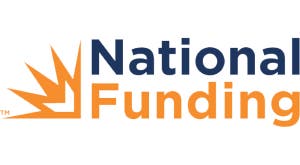
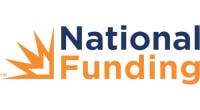
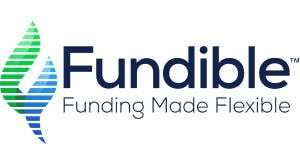
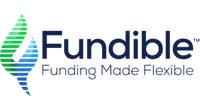
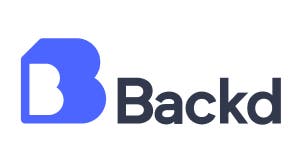
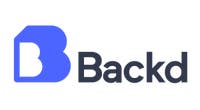

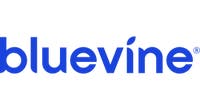
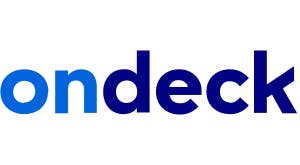
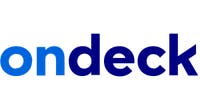


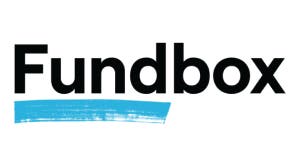
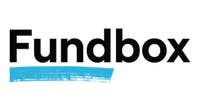
.png?optimize=medium&format=pjpg&auto=webp)
.png?optimize=medium&width=200&format=pjpg&auto=webp)
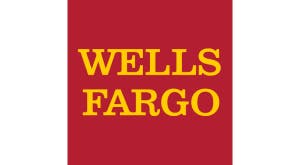
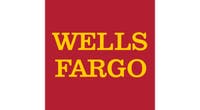







.png?auto=webp&fit=&width=200&format=pjpg)

